What’s the fuss
This is an introduction to a series of stories about my visits to Kayan “Long Neck” villages in Mae Hong Son province. The “GT-Rider Website” already features numerous stories about this iconic tribe [1], particularly a comprehensive write up from David Unkovich, with an historic background. My aim is to span my previous experiences through updated first-hand information and pictures. I emphasize that the Kayan are immigrants who left their home country, the Kaya state, to escape from poverty and from central Burmese government’s exactions; they took refuge in North Thailand, mostly during the late 80th. I strongly condemn uninformed publications and appeals to boycott visits to their dwellings; as they intent to be self-sufficient on tourist revenues, this only harms poor people [2]. On the contrary, I particularly recommend to traveler to visit again "Ban Mai Nai Soi", a charming village which, in the last years was nearly abandoned.
While traveling, my main interest is to meet folks and to learn about their cultures and customs. Modern life, however, is harsh to traditions who fade away toward convenience and uniformity. The performance of ancient rites and folklores is often restricted to festivals, surrogate villages and makeshift living museums. This is, however, nothing new, during my first trip to Hawaii, in 1987, I visited the “Polynesian Cultural Centre”, where students showcased the Pacific Islands way of life, otherwise difficult to observe.

1987 - A Maori performance in the “Polynesian Cultural Center”.
In 1990 I visited the “Sarawak Cultural Village”, near Kuching (Borneo) and spent a night in an Iban longhouse.

1990 - An Iban man demonstrating his skills in the “Sarawak Cultural Village”.
In 1989, I travelled to the Igufaos tribe, In Banaue (The Philippines) in the “Mountain Province” with the famous rice terraces.

1989 - An Ifugao lady, in Banaue, waiting for tourists near to her village.
As a last example, I spend a day in the “Korean Folk Village” in Yongin (South Korea), where locals, dressed in traditional costumes, performed various shows in a rebuilt ancient hamlet.

1989 - Korean man in traditional costume in the Yongin “Korean Folk Village”.
All these performances provided enriching cultural insights, as did my trips to North Thailand’s hilltribe villages, formerly also living from some tourist manna [3].
The common point of these interesting experiences was the encounter with people proud of their cultural legacy, and not only willing to keep it alive, but also to share it with foreigners.
After this digression, I segue to my main topic, the “Kayan Long Neck” villages of North Thailand. Not everybody is interested or wants to spent time and money to observe and learn about traditions and cultures which seem to belong to another epoch. There is, however, no excuse to despise humans and to regard them with contempt. When visiting cultural centers, I have never noticed degrading remarks and I was shocked to hear people calling Kayan villages a “human zoo”. Whoever coined this term, as well as all the echoing parrots, should be put to shame for applying such derogatory qualifier to refugees trying to survive. Even worse, newspapers and organizations favoring sensation over information, called for a visitor boycott of these settlements, just harming even more already poor people (see my reference to an excellent short movie [2]).
The attribute “controversial” is often attached to Kayan villages open to tourists. I do not see the controversy about people living in refugee settlements or, recently, in cultural villages, and trying to make a living instead of relying on donations. Public outrage should be directed toward the reasons why these people became refugees at first, and why they have to stay in camps.
The road to Nai Soi
“Nai Soi” (Ban Mai Nai Soi) is the common name given to “Kayan Tahar”, a Kayan settlement build near to “Refugee Camp 1”, in Mae Hong Son province, at the Burmese border. Back in 1991, during my first trip to this region, this was one of the two “Long Neck” villages that I visited and, later on, the one that I patronized most frequently. I start my stories here because, despite all its recent problems, it remains a charming hamlet which deserves more interest and promotion.
A twenty-five kilometers north-west journey leads to Nai Soi from Mae Hong Son, which, although being a small city, often sees me lost in its road labyrinth; thus, the “Mae Hong Son Loop” GT-Rider map [5], with the “Long Neck” village well indicated, is my indispensable advisor. Even so the itinerary is not complicated, it offers alternatives, which, finally, end as on one unique road. From the city centre the target is the outer "ring-road 128", where two different trails can be taken toward Nai Soi. They are both well indicated, with the newer one, a shortcut passing near to the old wooden bridge, starting more on the south side. The shortest way is straight over the Mae Hong Son hill’s daedalus; the longer possibilities are to drive north or south, on the main road, to the ring road’s junctions, and return to the Sop Soi intersection.

2017 - Sop Soi intersection along ring-road 128 – a billboard indicates “Long Neck”.
After two kilometers, the Sop Soi shortcut meets Route 5019, a recently renewed, well paved trail, for the remaining fourteen kilometers to destination.
Just after Nai Soi village and its remarkable small Shan temple, the itinerary leads left, continuing on a dirt road through the jungle, for the last two kilometers. Only higher road clearance vehicles and appropriate motorcycles can safely complete this part; visitors with more urban mounts might use a transport service available at this location [5].

2018 - The first part of the trail to Ban Mai Nai Soi (Kayan Tahar) .

2017 - Some sectors are slippery and inundated most of the year.

2017 - Even dry, the road is very rocky and bumpy at some places.
I do not have precise memories about the trail’s conditions during former times, but it varied through the years. For my first trip, in 1991 the pick-up stopped at the Mae Soi river rim, one and a half kilometers before the camp, and, together with two other tourists, we trekked up to the village.

1991 - The pick-up stopped before the river.

1991 - The trek to the village started through a muddy river bank.
In January 1996, I visited the village on a Honda chopper and, at that time, was able to pass a concrete river crossing.

1996 – On a Honda chopper through the river
The concrete crossing still exists, dry, or more or less under water, depending upon the season.

1996 – the concrete crossing through the Mae Soi river.

2017 – only slight changes to the concrete crossing through the Mae Soi river still exists.

2018 - In recent years, along this trail, I used my Versys motorcycle and, now-a-days, my Caribbean jeep.
Ban Mai Nai Soi
In the past, foreign visitors were required to pay 250 Thai Bath (7 US$) to enter the Kayan Tahar village (Thai nationals could always visit without a fee). As the place was recently nearly abandoned by Long Neck women, it is now free for everybody.

2009 – the former entrance where fees were collected.
These days it is possible to drive closer to the village; after stopping under a big tree, at a makeshift parking, the settlement opens along a pathway just in front.

2017 - Ban Mai Nai Soi (Kayan Tahar) hamlet entrance.
Traditional bamboo houses, often reinforced with modern materials, are aligned on both sides of the path. Most serve as dwellings, and, usually, feature a small shop selling handicrafts, particularly in the front row.

Houses and stalls are bordering the main village path.

2018 - Dwellings are still mostly build with bamboo.

2017 – A glimpse toward the back of the hamlet.

2018 - Nowadays, bamboo is sometimes reinforced with modern materials, like corrugated iron.
During my first visits, in the years 1991, 1993 and 1996, the village did not look much different. At these times, however, the roofs were mostly made out of leaves. This is still the case for some houses but, even so the material is available in the nearby forest, it needs skills and time to rebuild a roof about every three years.

1991 – A small house with its terrace used to sell local products.

1991 – Another traditional Kayan house.

1991 – A view of Ban Mai Nai Soi with joyful kids
Entrance fees and way of life
Life in Ban Mai Nai Soi is, in some respects, even harsher than in the past. The formerly collected entrance fees were partly used to pay a small monthly salary (about 50 US$) to women wearing the coils; without the visitors’ contributions, there is no more compensation. Selling homemade or imported souvenirs remains the women’s only source of revenue; sadly, as the settlement was considered empty by local travel agencies, few tourists bothered to call, and the business faded out. On their side, most of the men can now perform day labor and earn some money for the household.

2018 – The hamlet’s main road.
This situation is heartbreaking, as the village provides an authentic and charming experience, far away from crowds, in an enticing jungle environment. Five to seven Long Neck women were present during all my recent visits; in addition to one Kayaw (Long Ear) woman, cute children played or learned at school, while other adults were making different chores. These are not big numbers, but large enough to provide a worthwhile insight in the Kayan traditions and culture.
As the remaining dwellers of Ban Mai Nai Soi are happy to stay in this village, in an environment similar to their homeland, they should be encouraged and helped to do so. Boycott, misinformation and the convenience to visit places closer to touristic centres has, unfortunately, a negative effect on this pleasant dwelling’s future.

2018 - A shelter with a place to sell souvenirs.

2017 - A stall selling handicrafts, some are locally made.

2017 - Ma Pro at her stall selling locally weaved scarves.

2017 - A Kayaw (Long Ear) woman preparing a thread to weave a scarf.
Building stalls and repairing houses is a usual chore for Nai Soi dwellers.

2018 - Building a new stall, a bamboo structure and a leaves roof.

2018 -Preparing a row of leaves to cover the new stall.

2018 - Skilfully fixing the leave boards to the roof.

2018 - Time for a chat – two lovely Ban Mai Nai Soi Kayan ladies.

2018 - Ma Pro is preparing Kayan food, wrapped in banana leaves, to be shared in the community.

2018 – A Kayan woman with her son Jeri Miah.
Language and communication
When I first visited the Kayan people, in 1991 and a couple of years later, communication was limited. The “Long Neck” women did probably speak Burmese, most likely Karenni, and certainly one of their own Padaung (Kayan Lahwi) dialects, related to the large “Sino-Tibetan” language family. As new settlers in Mae Hong Son, these refugees did not speak Thai and I was myself just trying to figure out how a tonal language could ever be mastered by a Westerner.

1991 – my first visit to Ban Mai Nai Soi.

1991 – Friendly Nai Soi people, but, at that time only “smile” communication.

1991 – Ban Mai Nai Soi Kayan woman.

1991 – No mean of communication, even with the younger generation.
After a last visit, in 1996, I did not call at the Kayan villages for eighteen years. When I finally took again a bike along the “Mae Hong Son Loop”, I was pleased to discover that the “Long Neck” women had progressed in their Thai fluency, which, together with my own babbling evolution, allowed us to have interesting discussions. The younger generation did even speak English, and other idioms, like Chinese.
The Kayan’s (Padaung) script is similar to the Roman alphabet but the larger ethnic family, the Red Karen, to which they belong, uses a newly (1962) created alphabet, modelled on Thai and Burmese writings. It is now taught in all the Karenni camps.

2018 – A Ban Mai Nai Soi teacher explaining the Kayan script to me.
Ban Mai Nai Soi has a village school for children, sponsored by an NGO and is manned by local teachers. The nearby refugee camp (Camp 1) provides basic and middle education at the “Karenni High School” (grade 10) as well as a some nearby pre-University programs (for instance, the “Karenni Community College (KnCC)” and “Ban Nai Soi Community Learning Center (BnsCLC))”. Graduates might be accepted in various Universities but, as financing the studies is a burden, they often have to be rely on scholarships.

Ms Mu Ladawan, another local teacher in Ban Mai Nai Soi school; a nice Kayan advisor about modern village life.
During my first visits, our only communication means were smiles, nowadays, even with the same people, chats are possible in Thai language and, sometimes with the younger generation even in English.
The People of Ban Mai Nai Soi
In 1991 and in the following years, I was able to photograph a group of about twenty “Long Neck” women in Ban Mai Nai Soi. After an interruption of eighteen years, I visited the village again in November 2009. At that moment, discontent was still voiced about a 2008 ban to resettle some Kayan people, under an UNCHR program. Many of my former “models” were still around at that time, but some had moved to other settlements, in Mae Hong Son province. During that trip, and the next one, in 2011, I was still able to distribute printouts of pictures taken during former visits.

1991 – a group of Kayan women in Ban Mai Nai Soi.

1991 - Ma Pro – one of my most photographed Kayan woman (only about twenty years old at that time).

1991 - A Kayan lady in front of her house, she leaves in Chiangmai province today.
As the resettlement restrictions were finally eased, in the following years, I met always less of my former acquaintances and had to deliver my pictures to relatives. America, New Zealand, Australia and even Finland, were the new homelands of people that I had once known in Ban Mai Nai Soi. Another appeal, for dwellers of all the Mae Hong Son Kayan villages, are the numerous cultural centers in the two North Thailand provinces, and even as far away as Pattaya and Phuket. These places, closer to larger tourist flows, are well patronized and offer better salaries.

1991 – A smiling guitar player.

2009 – Same lady, still in Ban Mai Nai Soi, with her guitar … but today she has resettled to Chiangmai province.
During my latest visits to Ban Mai Nai Soi (February 2018) “Ma Pro” was the only remaining lady that I had known and photographed twenty-seven years ago. She had just applied for a transfer to Chiangmai, but one of her daughters and her daughter in law, with grandchildren, remain in the village.
How happy “Long Neck” women are in newer cultural villages is an individual matter and hinged to personal circumstances, children’s education, husband’s employment, healthcare, cost of living and, finally, the quality of life.
On the other hand, some have no alternative but to relocate. If Ban Mai Nai Soi, is not put back on the tourist map, opportunities to stay there will be more and more limited. This is why I encourage fellow traveler to visit the place again, to make a small donation at the entrance box, and to buy some local handicrafts.

1993 - Ma Pro, about twenty years old – she recently also left Ban Mai Nai Soi.
To meet Kayan women that I photographed between the years 1991 and 1996, I often visit two other Mae Hong Son villages, “Huay Pu Keng” and “Huay Sua Tao”, were some have relocated; others have moved to Chiangmai province or resettled to foreign countries.

2007 – Ma Pro, with her picture (from 1991) on my iPad.

2007 – Joyful Ma Pro; in February 2018 she also relocated to Mae Ai.

1991 – A kayan woman in Ban Mai Nai Soi – today relocated to Chiangmai province
The Karen refugee problem is far from settled; “The Border Consortium (TBC)” who provides food and shelter to these people, along the western Thailand border with Burma, still supports 92’000 people (2018 statistics) [6].
I was told that the camp in Ban Mai Nai Soi (“Camp Number 1”) once counted 40’000 refugees, now-a days, it still has about 10’000 dwellers (globally, Mae Hong Son province has 32’000 displaced persons, in four temporary shelters) [6].
Instead of spitting venom over refugee shelters, would-be human right defenders are well advised to channel their “enthusiasm” toward helping efficient NGOs.

1991 – A Kayan woman in Ban Mai Nai Soi … now resettled to another place.

1991 – A Kayan woman and her child, formerly in Ban Mai Nai Soi.

1991 – A Kayan woman in Ban Mai Nai Soi … now resettled to another village.

2012 – Ma Ba, mother of Mu Ladawan, with her picture from 2009. She has now resettled to Chiangmai province.
The Kayaw (Long Ear women) are an ethnicity closely related to the Kayan; some of them can be met in the same villages.

2018 - A Kayaw lady from Ban Mai Nai Soi.
Unwinding the coils.
When imagination appropriates stories, they become folk tales or urban legends. Whoever used his phantasms, and for whatever reasons, to explain the “Kayan’s coil” mystery must been a jester. Most interpretations, from tiger shields to adultery avoidance or anti-theft tools, do not stand physical reality or common sense. The rings are poor protections, easily removed and the bearer can still old her neck straight without them.
I was curious to learn how the Kayan themselves would explain their most peculiar custom and I interviewed a couple of elder ladies. The younger generation just did not seem to know, or to care, and referred me to people with longer memories. In all cases, the answer was similar and pointed toward a sign of identity, a way to recognize them even away from their dwellings. This might also just be an embellished story, a justification more that an explanation. Of course, “coiled” people can be noticed from far away, but it might well be a consequence rather than a reason to wear a brass adornment all lifelong.
My feeling is that, overtime, the rings became pieces of jewellery, of sexual differentiation; making them larger was challenging and, as such, a valuable particularity. Wearing a high coil is a distinction which, in this respect, makes women look more attractive.

2018 - Ma Pang (Ester) – in Ban Mai Nai Soi.
When speaking with Kayan ladies, I sense their proudness to be different, to be admired, visited and photographed and, finally to be mostly considered beautiful. In a way, the story of ethnic differentiation of the rings might apply even more these days, as they are recognized and highlighted for their traditions. Many thousands Karenni refugees are still forgotten in camps along the Thai-Burmese border, only some Kayan are in the spotlight and are able to live a more self-sufficient life.
The particularity of wearing heavy brass rings comes at a price, it is a hardship, often seen with commiseration from outsiders. This cannot be played down but has to be put in context. In modern times, particularly in their homeland, the Kayan are discouraged to maintain their coiled practices; conversion to Christianism also pushes in that direction. In the refugee population, but also increasingly in Burma, the tradition and cultural pressure is replaced by the necessity to make a leaving. Many other people have to work hard to earn their subsistence, they break their backs in wet rice fields or poison their lungs in coal mines, without anybody ever advocating a boycott.
Despite the discomfort of a rigid necklace, the process is not irreversible. In the past, however, older ladies were so accustomed to the adornment that it became a part of themselves. The coil was only removed about yearly, in the younger ages, to add a spire, and, for mature women, with a full-fledged height, maybe only every three years or more. In between, the brass is regularly cleaned with lemon water.
I have met women of all ages with recently removed brass coils; there is nothing spectacular about it. The real effect of the heavy artifact is not a vertebra elongation, an impossible phenomenon, but a collar bones and thoracic cage deviation which, together with the spires provides an optical illusion [7].

1991 - A young Kayan girl – at that time, some wore high coils.

1991 – Another young Kayan girl, photographed during my first visit.

2017 – Na Na, Ma Prao’s grand daughter, in Ban Mai Nai Soi. The coil might not be as permanent as it appears!
I do not want to elaborate on this point, but tender-hearted people, particularly sensitive to seeing young girls with a caged neck, may take solace in knowing, that, now-a-days, not all “adornments” are really permanent. In addition, it is not necessary to exaggerate the weight and height of the coil which can be elegantly combined with colorful scarfs.
-------------------------------------
NOTES
This is my second write-up of a series of stories about Mae Hong Son region and the Kayan tribe. The first story “Mae Hong Son Nostalgia” can be found on this link:
Mae Hong Son Nostalgia
[1] Kayan tribe write-ups on GT-Rider:
David’s comprehensive story with historic background:
The Long Necks
My other Kayan stories:
A Visit To Mae Hong Son's Kayan Tribes.
Mae Hong Son loop - twenty years later
[2] A well-documented short movie giving an insight to what the Kayan themselves think about visiting their villages:
Kayan: Beyond The Rings - Marko Randelovic
Movie :
[3] In the 90th, several hilltribe villages in North Thailand, with Hmong, Yao, Akha, Lahu and other ethnicities, were regularly visited by tourists on organized trips. At that time, the houses were still rudimentary, and part of the inhabitants would wear traditional dresses. Additional revenues for the locals were generated by the sales of handicrafts and small donations. Now-a-days the villages are modernized, the people vacate to other occupations, mostly dressed in T-shirts and pants and few tourists still visit these places.
To observe people in ethnic dresses and performing traditional activities, travelers have to be present during specific and limited festival days; the rest of the time only surrogate dwellings, in cultural villages, showcase fading traditions.
[4] An updated edition of David’s popular “Mae Hong Son Loop” map, the 6th edition, was released in February 2018. It is not only an indispensable travel companion and complements to GT-Rider’s forum information, it is valuable souvenirs and even a collector’s items.
Here is the reference link to the map: 2018 Gtr Mae Hong Son Loop Map
[5] Telephone numbers of Nai Soi transport service to the “Long Neck” settlement:
085-7206997 and 082 1914275.
The pick-up truck is usually parked at the beginning of the dirt road, two kilometers before the Kayan village.
[6] Camp population and information provided by “The Border Consortiom”
Homepage (EN)
[7] Reproduction of a poster, displayed in the various Kayan villages, showing the effect of the rings on the collar bones and rip cage:

This is an introduction to a series of stories about my visits to Kayan “Long Neck” villages in Mae Hong Son province. The “GT-Rider Website” already features numerous stories about this iconic tribe [1], particularly a comprehensive write up from David Unkovich, with an historic background. My aim is to span my previous experiences through updated first-hand information and pictures. I emphasize that the Kayan are immigrants who left their home country, the Kaya state, to escape from poverty and from central Burmese government’s exactions; they took refuge in North Thailand, mostly during the late 80th. I strongly condemn uninformed publications and appeals to boycott visits to their dwellings; as they intent to be self-sufficient on tourist revenues, this only harms poor people [2]. On the contrary, I particularly recommend to traveler to visit again "Ban Mai Nai Soi", a charming village which, in the last years was nearly abandoned.
While traveling, my main interest is to meet folks and to learn about their cultures and customs. Modern life, however, is harsh to traditions who fade away toward convenience and uniformity. The performance of ancient rites and folklores is often restricted to festivals, surrogate villages and makeshift living museums. This is, however, nothing new, during my first trip to Hawaii, in 1987, I visited the “Polynesian Cultural Centre”, where students showcased the Pacific Islands way of life, otherwise difficult to observe.
1987 - A Maori performance in the “Polynesian Cultural Center”.
In 1990 I visited the “Sarawak Cultural Village”, near Kuching (Borneo) and spent a night in an Iban longhouse.
1990 - An Iban man demonstrating his skills in the “Sarawak Cultural Village”.
In 1989, I travelled to the Igufaos tribe, In Banaue (The Philippines) in the “Mountain Province” with the famous rice terraces.
1989 - An Ifugao lady, in Banaue, waiting for tourists near to her village.
As a last example, I spend a day in the “Korean Folk Village” in Yongin (South Korea), where locals, dressed in traditional costumes, performed various shows in a rebuilt ancient hamlet.
1989 - Korean man in traditional costume in the Yongin “Korean Folk Village”.
All these performances provided enriching cultural insights, as did my trips to North Thailand’s hilltribe villages, formerly also living from some tourist manna [3].
The common point of these interesting experiences was the encounter with people proud of their cultural legacy, and not only willing to keep it alive, but also to share it with foreigners.
After this digression, I segue to my main topic, the “Kayan Long Neck” villages of North Thailand. Not everybody is interested or wants to spent time and money to observe and learn about traditions and cultures which seem to belong to another epoch. There is, however, no excuse to despise humans and to regard them with contempt. When visiting cultural centers, I have never noticed degrading remarks and I was shocked to hear people calling Kayan villages a “human zoo”. Whoever coined this term, as well as all the echoing parrots, should be put to shame for applying such derogatory qualifier to refugees trying to survive. Even worse, newspapers and organizations favoring sensation over information, called for a visitor boycott of these settlements, just harming even more already poor people (see my reference to an excellent short movie [2]).
The attribute “controversial” is often attached to Kayan villages open to tourists. I do not see the controversy about people living in refugee settlements or, recently, in cultural villages, and trying to make a living instead of relying on donations. Public outrage should be directed toward the reasons why these people became refugees at first, and why they have to stay in camps.
The road to Nai Soi
“Nai Soi” (Ban Mai Nai Soi) is the common name given to “Kayan Tahar”, a Kayan settlement build near to “Refugee Camp 1”, in Mae Hong Son province, at the Burmese border. Back in 1991, during my first trip to this region, this was one of the two “Long Neck” villages that I visited and, later on, the one that I patronized most frequently. I start my stories here because, despite all its recent problems, it remains a charming hamlet which deserves more interest and promotion.
A twenty-five kilometers north-west journey leads to Nai Soi from Mae Hong Son, which, although being a small city, often sees me lost in its road labyrinth; thus, the “Mae Hong Son Loop” GT-Rider map [5], with the “Long Neck” village well indicated, is my indispensable advisor. Even so the itinerary is not complicated, it offers alternatives, which, finally, end as on one unique road. From the city centre the target is the outer "ring-road 128", where two different trails can be taken toward Nai Soi. They are both well indicated, with the newer one, a shortcut passing near to the old wooden bridge, starting more on the south side. The shortest way is straight over the Mae Hong Son hill’s daedalus; the longer possibilities are to drive north or south, on the main road, to the ring road’s junctions, and return to the Sop Soi intersection.
2017 - Sop Soi intersection along ring-road 128 – a billboard indicates “Long Neck”.
After two kilometers, the Sop Soi shortcut meets Route 5019, a recently renewed, well paved trail, for the remaining fourteen kilometers to destination.
Just after Nai Soi village and its remarkable small Shan temple, the itinerary leads left, continuing on a dirt road through the jungle, for the last two kilometers. Only higher road clearance vehicles and appropriate motorcycles can safely complete this part; visitors with more urban mounts might use a transport service available at this location [5].
2018 - The first part of the trail to Ban Mai Nai Soi (Kayan Tahar) .
2017 - Some sectors are slippery and inundated most of the year.
2017 - Even dry, the road is very rocky and bumpy at some places.
I do not have precise memories about the trail’s conditions during former times, but it varied through the years. For my first trip, in 1991 the pick-up stopped at the Mae Soi river rim, one and a half kilometers before the camp, and, together with two other tourists, we trekked up to the village.
1991 - The pick-up stopped before the river.
1991 - The trek to the village started through a muddy river bank.
In January 1996, I visited the village on a Honda chopper and, at that time, was able to pass a concrete river crossing.
1996 – On a Honda chopper through the river
The concrete crossing still exists, dry, or more or less under water, depending upon the season.
1996 – the concrete crossing through the Mae Soi river.
2017 – only slight changes to the concrete crossing through the Mae Soi river still exists.
2018 - In recent years, along this trail, I used my Versys motorcycle and, now-a-days, my Caribbean jeep.
Ban Mai Nai Soi
In the past, foreign visitors were required to pay 250 Thai Bath (7 US$) to enter the Kayan Tahar village (Thai nationals could always visit without a fee). As the place was recently nearly abandoned by Long Neck women, it is now free for everybody.
2009 – the former entrance where fees were collected.
These days it is possible to drive closer to the village; after stopping under a big tree, at a makeshift parking, the settlement opens along a pathway just in front.

2017 - Ban Mai Nai Soi (Kayan Tahar) hamlet entrance.
Traditional bamboo houses, often reinforced with modern materials, are aligned on both sides of the path. Most serve as dwellings, and, usually, feature a small shop selling handicrafts, particularly in the front row.
Houses and stalls are bordering the main village path.
2018 - Dwellings are still mostly build with bamboo.
2017 – A glimpse toward the back of the hamlet.
2018 - Nowadays, bamboo is sometimes reinforced with modern materials, like corrugated iron.
During my first visits, in the years 1991, 1993 and 1996, the village did not look much different. At these times, however, the roofs were mostly made out of leaves. This is still the case for some houses but, even so the material is available in the nearby forest, it needs skills and time to rebuild a roof about every three years.
1991 – A small house with its terrace used to sell local products.
1991 – Another traditional Kayan house.
1991 – A view of Ban Mai Nai Soi with joyful kids
Entrance fees and way of life
Life in Ban Mai Nai Soi is, in some respects, even harsher than in the past. The formerly collected entrance fees were partly used to pay a small monthly salary (about 50 US$) to women wearing the coils; without the visitors’ contributions, there is no more compensation. Selling homemade or imported souvenirs remains the women’s only source of revenue; sadly, as the settlement was considered empty by local travel agencies, few tourists bothered to call, and the business faded out. On their side, most of the men can now perform day labor and earn some money for the household.
2018 – The hamlet’s main road.
This situation is heartbreaking, as the village provides an authentic and charming experience, far away from crowds, in an enticing jungle environment. Five to seven Long Neck women were present during all my recent visits; in addition to one Kayaw (Long Ear) woman, cute children played or learned at school, while other adults were making different chores. These are not big numbers, but large enough to provide a worthwhile insight in the Kayan traditions and culture.
As the remaining dwellers of Ban Mai Nai Soi are happy to stay in this village, in an environment similar to their homeland, they should be encouraged and helped to do so. Boycott, misinformation and the convenience to visit places closer to touristic centres has, unfortunately, a negative effect on this pleasant dwelling’s future.
2018 - A shelter with a place to sell souvenirs.
2017 - A stall selling handicrafts, some are locally made.
2017 - Ma Pro at her stall selling locally weaved scarves.
2017 - A Kayaw (Long Ear) woman preparing a thread to weave a scarf.
Building stalls and repairing houses is a usual chore for Nai Soi dwellers.
2018 - Building a new stall, a bamboo structure and a leaves roof.
2018 -Preparing a row of leaves to cover the new stall.
2018 - Skilfully fixing the leave boards to the roof.

2018 - Time for a chat – two lovely Ban Mai Nai Soi Kayan ladies.

2018 - Ma Pro is preparing Kayan food, wrapped in banana leaves, to be shared in the community.

2018 – A Kayan woman with her son Jeri Miah.
Language and communication
When I first visited the Kayan people, in 1991 and a couple of years later, communication was limited. The “Long Neck” women did probably speak Burmese, most likely Karenni, and certainly one of their own Padaung (Kayan Lahwi) dialects, related to the large “Sino-Tibetan” language family. As new settlers in Mae Hong Son, these refugees did not speak Thai and I was myself just trying to figure out how a tonal language could ever be mastered by a Westerner.
1991 – my first visit to Ban Mai Nai Soi.
1991 – Friendly Nai Soi people, but, at that time only “smile” communication.
1991 – Ban Mai Nai Soi Kayan woman.

1991 – No mean of communication, even with the younger generation.
After a last visit, in 1996, I did not call at the Kayan villages for eighteen years. When I finally took again a bike along the “Mae Hong Son Loop”, I was pleased to discover that the “Long Neck” women had progressed in their Thai fluency, which, together with my own babbling evolution, allowed us to have interesting discussions. The younger generation did even speak English, and other idioms, like Chinese.
The Kayan’s (Padaung) script is similar to the Roman alphabet but the larger ethnic family, the Red Karen, to which they belong, uses a newly (1962) created alphabet, modelled on Thai and Burmese writings. It is now taught in all the Karenni camps.
2018 – A Ban Mai Nai Soi teacher explaining the Kayan script to me.
Ban Mai Nai Soi has a village school for children, sponsored by an NGO and is manned by local teachers. The nearby refugee camp (Camp 1) provides basic and middle education at the “Karenni High School” (grade 10) as well as a some nearby pre-University programs (for instance, the “Karenni Community College (KnCC)” and “Ban Nai Soi Community Learning Center (BnsCLC))”. Graduates might be accepted in various Universities but, as financing the studies is a burden, they often have to be rely on scholarships.
Ms Mu Ladawan, another local teacher in Ban Mai Nai Soi school; a nice Kayan advisor about modern village life.
During my first visits, our only communication means were smiles, nowadays, even with the same people, chats are possible in Thai language and, sometimes with the younger generation even in English.
The People of Ban Mai Nai Soi
In 1991 and in the following years, I was able to photograph a group of about twenty “Long Neck” women in Ban Mai Nai Soi. After an interruption of eighteen years, I visited the village again in November 2009. At that moment, discontent was still voiced about a 2008 ban to resettle some Kayan people, under an UNCHR program. Many of my former “models” were still around at that time, but some had moved to other settlements, in Mae Hong Son province. During that trip, and the next one, in 2011, I was still able to distribute printouts of pictures taken during former visits.
1991 – a group of Kayan women in Ban Mai Nai Soi.
1991 - Ma Pro – one of my most photographed Kayan woman (only about twenty years old at that time).
1991 - A Kayan lady in front of her house, she leaves in Chiangmai province today.
As the resettlement restrictions were finally eased, in the following years, I met always less of my former acquaintances and had to deliver my pictures to relatives. America, New Zealand, Australia and even Finland, were the new homelands of people that I had once known in Ban Mai Nai Soi. Another appeal, for dwellers of all the Mae Hong Son Kayan villages, are the numerous cultural centers in the two North Thailand provinces, and even as far away as Pattaya and Phuket. These places, closer to larger tourist flows, are well patronized and offer better salaries.
1991 – A smiling guitar player.

2009 – Same lady, still in Ban Mai Nai Soi, with her guitar … but today she has resettled to Chiangmai province.
During my latest visits to Ban Mai Nai Soi (February 2018) “Ma Pro” was the only remaining lady that I had known and photographed twenty-seven years ago. She had just applied for a transfer to Chiangmai, but one of her daughters and her daughter in law, with grandchildren, remain in the village.
How happy “Long Neck” women are in newer cultural villages is an individual matter and hinged to personal circumstances, children’s education, husband’s employment, healthcare, cost of living and, finally, the quality of life.
On the other hand, some have no alternative but to relocate. If Ban Mai Nai Soi, is not put back on the tourist map, opportunities to stay there will be more and more limited. This is why I encourage fellow traveler to visit the place again, to make a small donation at the entrance box, and to buy some local handicrafts.
1993 - Ma Pro, about twenty years old – she recently also left Ban Mai Nai Soi.
To meet Kayan women that I photographed between the years 1991 and 1996, I often visit two other Mae Hong Son villages, “Huay Pu Keng” and “Huay Sua Tao”, were some have relocated; others have moved to Chiangmai province or resettled to foreign countries.
2007 – Ma Pro, with her picture (from 1991) on my iPad.

2007 – Joyful Ma Pro; in February 2018 she also relocated to Mae Ai.
1991 – A kayan woman in Ban Mai Nai Soi – today relocated to Chiangmai province
The Karen refugee problem is far from settled; “The Border Consortium (TBC)” who provides food and shelter to these people, along the western Thailand border with Burma, still supports 92’000 people (2018 statistics) [6].
I was told that the camp in Ban Mai Nai Soi (“Camp Number 1”) once counted 40’000 refugees, now-a days, it still has about 10’000 dwellers (globally, Mae Hong Son province has 32’000 displaced persons, in four temporary shelters) [6].
Instead of spitting venom over refugee shelters, would-be human right defenders are well advised to channel their “enthusiasm” toward helping efficient NGOs.

1991 – A Kayan woman in Ban Mai Nai Soi … now resettled to another place.
1991 – A Kayan woman and her child, formerly in Ban Mai Nai Soi.

1991 – A Kayan woman in Ban Mai Nai Soi … now resettled to another village.
2012 – Ma Ba, mother of Mu Ladawan, with her picture from 2009. She has now resettled to Chiangmai province.
The Kayaw (Long Ear women) are an ethnicity closely related to the Kayan; some of them can be met in the same villages.

2018 - A Kayaw lady from Ban Mai Nai Soi.
Unwinding the coils.
When imagination appropriates stories, they become folk tales or urban legends. Whoever used his phantasms, and for whatever reasons, to explain the “Kayan’s coil” mystery must been a jester. Most interpretations, from tiger shields to adultery avoidance or anti-theft tools, do not stand physical reality or common sense. The rings are poor protections, easily removed and the bearer can still old her neck straight without them.
I was curious to learn how the Kayan themselves would explain their most peculiar custom and I interviewed a couple of elder ladies. The younger generation just did not seem to know, or to care, and referred me to people with longer memories. In all cases, the answer was similar and pointed toward a sign of identity, a way to recognize them even away from their dwellings. This might also just be an embellished story, a justification more that an explanation. Of course, “coiled” people can be noticed from far away, but it might well be a consequence rather than a reason to wear a brass adornment all lifelong.
My feeling is that, overtime, the rings became pieces of jewellery, of sexual differentiation; making them larger was challenging and, as such, a valuable particularity. Wearing a high coil is a distinction which, in this respect, makes women look more attractive.

2018 - Ma Pang (Ester) – in Ban Mai Nai Soi.
When speaking with Kayan ladies, I sense their proudness to be different, to be admired, visited and photographed and, finally to be mostly considered beautiful. In a way, the story of ethnic differentiation of the rings might apply even more these days, as they are recognized and highlighted for their traditions. Many thousands Karenni refugees are still forgotten in camps along the Thai-Burmese border, only some Kayan are in the spotlight and are able to live a more self-sufficient life.
The particularity of wearing heavy brass rings comes at a price, it is a hardship, often seen with commiseration from outsiders. This cannot be played down but has to be put in context. In modern times, particularly in their homeland, the Kayan are discouraged to maintain their coiled practices; conversion to Christianism also pushes in that direction. In the refugee population, but also increasingly in Burma, the tradition and cultural pressure is replaced by the necessity to make a leaving. Many other people have to work hard to earn their subsistence, they break their backs in wet rice fields or poison their lungs in coal mines, without anybody ever advocating a boycott.
Despite the discomfort of a rigid necklace, the process is not irreversible. In the past, however, older ladies were so accustomed to the adornment that it became a part of themselves. The coil was only removed about yearly, in the younger ages, to add a spire, and, for mature women, with a full-fledged height, maybe only every three years or more. In between, the brass is regularly cleaned with lemon water.
I have met women of all ages with recently removed brass coils; there is nothing spectacular about it. The real effect of the heavy artifact is not a vertebra elongation, an impossible phenomenon, but a collar bones and thoracic cage deviation which, together with the spires provides an optical illusion [7].

1991 - A young Kayan girl – at that time, some wore high coils.

1991 – Another young Kayan girl, photographed during my first visit.

2017 – Na Na, Ma Prao’s grand daughter, in Ban Mai Nai Soi. The coil might not be as permanent as it appears!
I do not want to elaborate on this point, but tender-hearted people, particularly sensitive to seeing young girls with a caged neck, may take solace in knowing, that, now-a-days, not all “adornments” are really permanent. In addition, it is not necessary to exaggerate the weight and height of the coil which can be elegantly combined with colorful scarfs.
-------------------------------------
NOTES
This is my second write-up of a series of stories about Mae Hong Son region and the Kayan tribe. The first story “Mae Hong Son Nostalgia” can be found on this link:
Mae Hong Son Nostalgia
[1] Kayan tribe write-ups on GT-Rider:
David’s comprehensive story with historic background:
The Long Necks
My other Kayan stories:
A Visit To Mae Hong Son's Kayan Tribes.
Mae Hong Son loop - twenty years later
[2] A well-documented short movie giving an insight to what the Kayan themselves think about visiting their villages:
Kayan: Beyond The Rings - Marko Randelovic
Movie :
[3] In the 90th, several hilltribe villages in North Thailand, with Hmong, Yao, Akha, Lahu and other ethnicities, were regularly visited by tourists on organized trips. At that time, the houses were still rudimentary, and part of the inhabitants would wear traditional dresses. Additional revenues for the locals were generated by the sales of handicrafts and small donations. Now-a-days the villages are modernized, the people vacate to other occupations, mostly dressed in T-shirts and pants and few tourists still visit these places.
To observe people in ethnic dresses and performing traditional activities, travelers have to be present during specific and limited festival days; the rest of the time only surrogate dwellings, in cultural villages, showcase fading traditions.
[4] An updated edition of David’s popular “Mae Hong Son Loop” map, the 6th edition, was released in February 2018. It is not only an indispensable travel companion and complements to GT-Rider’s forum information, it is valuable souvenirs and even a collector’s items.
Here is the reference link to the map: 2018 Gtr Mae Hong Son Loop Map
[5] Telephone numbers of Nai Soi transport service to the “Long Neck” settlement:
085-7206997 and 082 1914275.
The pick-up truck is usually parked at the beginning of the dirt road, two kilometers before the Kayan village.
[6] Camp population and information provided by “The Border Consortiom”
Homepage (EN)
[7] Reproduction of a poster, displayed in the various Kayan villages, showing the effect of the rings on the collar bones and rip cage:

Attachments
-
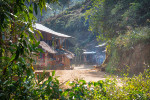 75D_4461_AuroraHDR2018-edit-Edit-X2.jpg470.7 KB · Views: 437
75D_4461_AuroraHDR2018-edit-Edit-X2.jpg470.7 KB · Views: 437 -
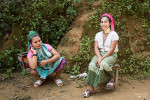 75D_4545-X2.jpg503.2 KB · Views: 387
75D_4545-X2.jpg503.2 KB · Views: 387 -
 75D_5401_AuroraHDR2018-edit-X2.jpg484.8 KB · Views: 386
75D_5401_AuroraHDR2018-edit-X2.jpg484.8 KB · Views: 386 -
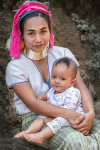 T2JC9221-Edit-XL.jpg133.1 KB · Views: 344
T2JC9221-Edit-XL.jpg133.1 KB · Views: 344 -
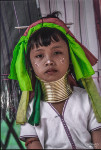 Family0457-XL.jpg142.1 KB · Views: 439
Family0457-XL.jpg142.1 KB · Views: 439 -
 DSC_9782-X2.jpg208.5 KB · Views: 398
DSC_9782-X2.jpg208.5 KB · Views: 398 -
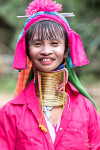 PR2X6640-Edit-XL.jpg149.4 KB · Views: 418
PR2X6640-Edit-XL.jpg149.4 KB · Views: 418 -
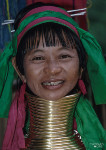 kareen-LN0039-XL.jpg138.2 KB · Views: 370
kareen-LN0039-XL.jpg138.2 KB · Views: 370 -
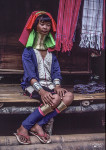 kareen-LN0057-XL.jpg159.2 KB · Views: 357
kareen-LN0057-XL.jpg159.2 KB · Views: 357 -
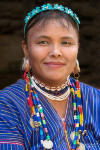 T2JC9197-Edit-Edit-XL.jpg179.1 KB · Views: 397
T2JC9197-Edit-Edit-XL.jpg179.1 KB · Views: 397 -
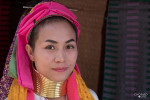 PR2X6657-Edit-X2.jpg185.4 KB · Views: 440
PR2X6657-Edit-X2.jpg185.4 KB · Views: 440 -
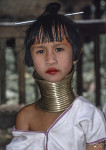 karee-Longeck0039-XL.jpg117.8 KB · Views: 455
karee-Longeck0039-XL.jpg117.8 KB · Views: 455 -
 karee-Longeck0005-X2.jpg371.3 KB · Views: 407
karee-Longeck0005-X2.jpg371.3 KB · Views: 407 -
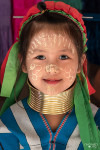 PR2X7298-Edit-Edit-XL.jpg135.6 KB · Views: 388
PR2X7298-Edit-Edit-XL.jpg135.6 KB · Views: 388 -
 MHS%20Map%20Cover-XL.jpg112 KB · Views: 383
MHS%20Map%20Cover-XL.jpg112 KB · Views: 383 -
 NK7_8359-L.jpg85.6 KB · Views: 449
NK7_8359-L.jpg85.6 KB · Views: 449
Last edited:

